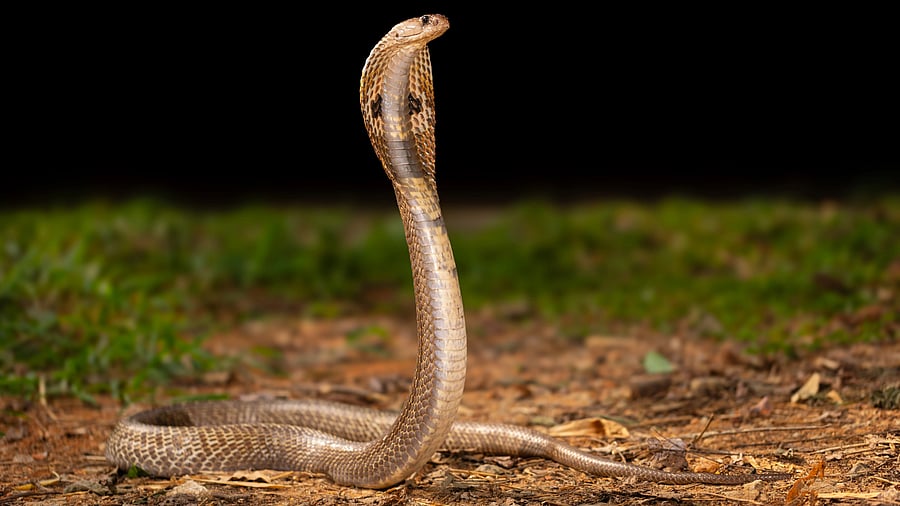
An Indian spectacled cobra, a member of the Elapidae family of snakes, on the IISc campus.
Credit: Kartik Sunagar
Bengaluru: Karnataka recorded 13,235 snakebite cases and 100 deaths in 2024, a sharp increase from 6,596 cases and 19 deaths in 2023, and 3,439 cases and 17 deaths in 2022.
The rise has been attributed to habitat loss for snakes and the government’s decision to declare snakebite a notifiable disease under the Karnataka Epidemic Diseases Act in 2024.
Health and Family Welfare Minister Dinesh Gundu Rao provided the data in a reply to MLC S Ravi in the Legislative Council on August 11.
Tumakuru recorded the most deaths with nine people succumbing to snakebites while Hassan saw the highest number of cases at 850.
An urban wildlife specialist and snake rescuer said habitat loss, land encroachments and solid waste management were driving the spike in snakebites.
As cities expand, new residential layouts are coming up on abandoned or forest lands housing snakes. People living there become the vulnerable population, the specialist explained, wishing anonymity.
He said discarded milk covers and coconut shells attract rats. Snakes have the ability to track rats by smell, drawing them into residential areas.
He also noted that many deaths occur from heart attacks even in cases of dry bite.
“People fear snakebites so much that they collapse even before we have time to check the bite,” he said.
Dr Raghunandan, Director of Integrated Disease Surveillance Program (IDSP), said cases had risen largely due to better reportage under the Karnataka Epidemic Diseases Act.
Asked about whether there are enough stocks of anti-venom, Dr Shrinivas, also from IDSP, said there were enough stocks in all community, primary and taluk health centres.
Karnataka has 20 taluk-level hospitals and 2,138 primary health centres (PHCs). “In case of a bite, one person may need up to 10 vials of anti-venom,” he noted.
According to the WHO, snakebites kill about 45,000 to 60,000 people every year.